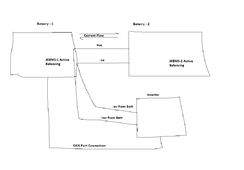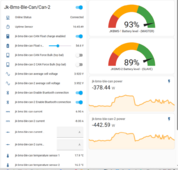kolek
village idiot
- Joined
- Sep 29, 2021
- Messages
- 344
The newer version of the JK-BMS will talk to inverters, and there's a project to allow the JK-BMS to talk to the inverter.
It would mean my JK BMS could talk to my Deye inverter.
Sure it's cool, I get it. Maybe you can implement some cool charging strategies, etc., but beyond things like that, is there any real major advantage?
There's really only 2 advantages that I personally would be interested in:
- additional safety
- additional battery longevity
If it's not delivering either of the above, I probably won't bother.
Thoughts?
It would mean my JK BMS could talk to my Deye inverter.
Sure it's cool, I get it. Maybe you can implement some cool charging strategies, etc., but beyond things like that, is there any real major advantage?
There's really only 2 advantages that I personally would be interested in:
- additional safety
- additional battery longevity
If it's not delivering either of the above, I probably won't bother.
Thoughts?






